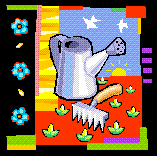The holidays are a season for giving, but also a good time to think about waste reduction. We often end up sending large gifts of holiday discards to the landfill. Gift wrap, packaging and party goods add up to truckloads of extra garbage. Start your own traditions to reduce, reuse and recycle your holiday trash.
Green holiday tips:
- Save holiday wrappings such as gift bags, ribbons, bows, boxes and plastic peanuts to use again.
- Replace incandescent Christmas lights with energy efficient LED lights.
- Give eco-friendly gifts such as a fishing license or movie tickets instead of “stuff” that will ultimately be tossed.
- Buy rechargeable batteries and a battery charger to accompany electronic gifts.
- Draw names for family giving instead of buying for everyone.
- Find a new home for usable items that have been replaced by visiting our A to Z “Get Rid of It” Guide at www.pinellascounty.org/utilities/getridofit.
- Entertain with reusable dishes, silverware and cloth napkins instead of disposable items.
- Recycle gift wrap, tissue paper or greeting cards with “mixed paper” at curbside or drop-off. For a list of local recycling programs, visit www.pinellascounty.org/recycle.
- Buy paper items, such as greeting cards, with recycled content.
- Set up a recycling bin for cans and bottles if you host a holiday party.
- Reuse an artificial tree, or recycle a “real” Christmas tree. Most cities in Pinellas County collect trees for recycling either at curbside or drop-off sites.
Visit www.pinellascounty.org/utilities/holidays for more valuable tips to cut holiday waste.
For more information on recycling, contact Pinellas County Solid Waste at (727) 464-7500, or visit www.pinellascounty.org/recycle.
For more information on Pinellas County services and programs, visit www.pinellascounty.org or create a shortcut to www.pinellascounty.org/mobile on any smartphone. Pinellas County government is on Facebook, Twitter and YouTube. Pinellas County complies with the Americans with Disabilities Act.


 ShareThis
ShareThis



























